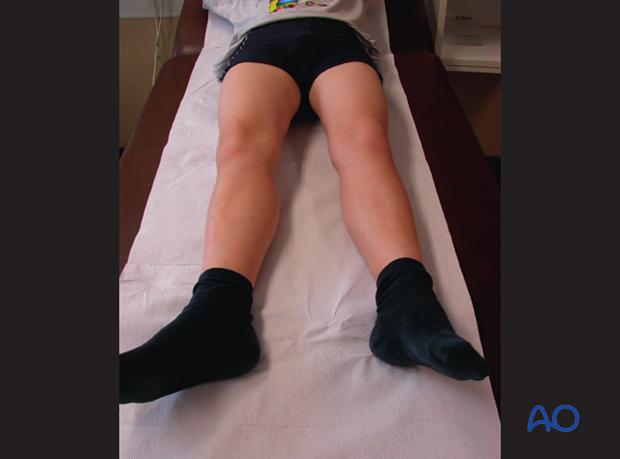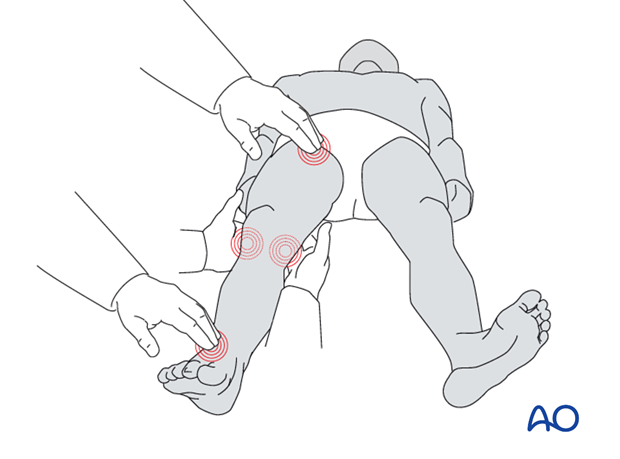Patient examination
1. Visual inspection
The patient is inspected visually for the following signs:
- Position of the leg
- Symmetry of the pelvis
- Skin lesions
- Color of the leg and foot
Note: In this picture, the right leg is more externally rotated. Potent ial reasons for this position include:
- Pain
- Fracture
- Other hip pathology, eg, slipped capital femoral epiphysis (SCFE)

2. Palpation
Peripheral pulses are verified by palpation.

3. Neurological assessment
Neurological injury can be caused by a fracture, or following manipulation and fixation.
It is essential to perform a systematic neurological assessment both pre- and postoperatively, and to document the function of the individual peripheral nerves.
Neurological assessment can be difficult to perform and is influenced by the level of pain and the age of the child.
4. Vascular injuries
Vascular injuries associated with a hip fracture, or hip dislocation, are very rare.
Careful examination is required in all cases, and if there are concerns about an associated vascular injury, further investigation is recommended.













